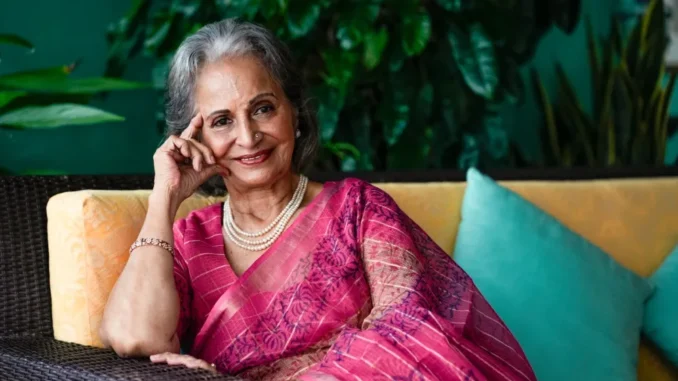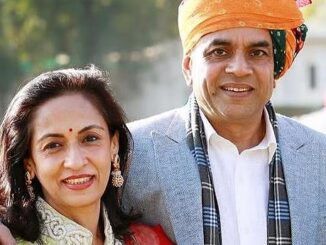
Waheeda Rehman, one of the most graceful and enduring legends of Indian cinema, has carved a legacy that continues to inspire generations of actors and filmmakers alike. With a career spanning more than six decades, she remains a beacon of elegance, talent, and quiet strength. As the film industry and her admirers come together to celebrate her legacy, it is only fitting to revisit the unforgettable roles that not only defined her journey but also left an indelible mark on Indian cinema.
Waheeda Rehman’s filmography is a masterclass in versatility and depth. Starting her cinematic journey in the 1950s, she quickly rose to prominence with her distinctive screen presence and emotive performances. Her early work with legendary filmmaker Guru Dutt, particularly in films like Pyaasa (1957) and Kaagaz Ke Phool (1959), showcased a rare sensitivity. In Pyaasa, she played a compassionate and resilient woman who offers hope and love to a disillusioned poet, creating a character that was both poignant and powerful. Her chemistry with Guru Dutt and her soulful expressions added emotional weight to the film’s already poetic narrative.
In Kaagaz Ke Phool, often considered ahead of its time, Waheeda essayed the role of an actress who becomes the muse and emotional anchor of a troubled filmmaker. The film may not have found commercial success upon release, but it is now hailed as a cinematic masterpiece—and much of its beauty lies in Waheeda’s restrained yet evocative performance.
Another milestone in her career was Guide (1965), a film that redefined storytelling in Hindi cinema. Paired with Dev Anand, Waheeda played Rosie, a woman seeking freedom from a stifling marriage and aspiring to live life on her own terms. It was a bold character for its time, and Waheeda portrayed Rosie’s inner turmoil, strength, and transformation with breathtaking finesse. Guide remains one of the most critically acclaimed performances in Indian film history and is often cited as Waheeda Rehman’s magnum opus.
Beyond these classics, she brought life to an array of diverse characters. From the tragic courtesan in Mujhe Jeene Do (1963), which earned her a Filmfare nomination, to the resilient mother figure in later films like Trishul (1978) and Chaudhvin Ka Chand (1960), her presence on screen was always commanding yet graceful. She never relied on theatrics; instead, her strength lay in subtlety, poise, and the emotional intelligence she brought to each role.
Even in the latter years of her career, Waheeda continued to embrace meaningful roles in contemporary cinema. Appearances in films such as Rang De Basanti (2006) and Delhi 6 (2009) reminded audiences of her timeless charm and natural talent. Despite limited screen time, she managed to leave a lasting impression—proof that true artistry doesn’t fade with time.
Waheeda Rehman’s contribution to Indian cinema goes far beyond her performances. She was a trailblazer who portrayed women not as mere romantic interests but as individuals with agency, dreams, and emotional depth. In an era when female roles were often confined to stereotypes, she pushed the boundaries by choosing scripts that gave her characters a voice.
Her work earned her several accolades, including the prestigious Padma Bhushan and Padma Shri awards, and most recently, the Dadasaheb Phalke Award—India’s highest honour in cinema. But perhaps the greatest tribute to her legacy is the continued admiration she receives from peers, audiences, and new-age filmmakers who view her career as a gold standard for performance and integrity.
Today, as we look back at Waheeda Rehman’s extraordinary journey, we do more than just celebrate her cinematic achievements. We honour a woman who defined grace on screen, who brought dignity to every character she portrayed, and who continues to be a guiding light for all who believe in the transformative power of storytelling.
In a world that constantly changes, Waheeda Rehman’s legacy remains timeless—etched in every frame, every melody, and every heart she touched with her quiet brilliance.



